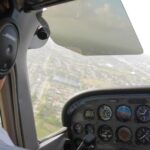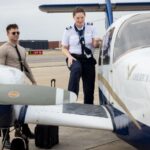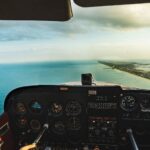By Mike Bliss
Many IFR pilots, even those who have completed airline academy, spend too much time nervously looking at the approach chart while flying the approach and, consequently, less time scanning the flight instruments. This is primarily because they do not have a structured way of going about chart reference. By taking into account the segments of an approach, the savvy IFR pilot realizes what information is needed for each upcoming segment and spends only a few seconds seeking that specific information.
A standard instrument approach procedure generally has four segments plus the transition from the enroute structure to the approach structure. The initial approach segment begins at the initial approach fix and has the purpose of positioning the airplane inbound in the approach corridor. While on the transition segment of the approach, the pilot uses the 6Ts (Turn, Time, Twist, Throttle, Talk, Track) as an approach checklist to determine what new heading, altitude, navigational intercept and timing is needed upon reaching the IAF.
While on the initial segment, the pilot uses the 6Ts again to determine what is needed to become established in the approach corridor on either the intermediate segment, or in the event that there is no intermediate segment, what is needed to fly the final approach segment. At this time, as drilled into the pilot in airline academy, the pilot assures the pre-landing checklist is complete and that the aircraft is at the final airspeed, configuration and altitude to enter the final segment. The pilot must also determine the answer to three questions: How low? How long? Which way? How low is either the MDA or DA? How long is the missed approach point determined? Which way is either left, right, or straight, and is the initial heading if a missed approach becomes necessary?
The final approach segment logically beings at the final approach fix. During this segment, full concentration can be applied to flying the approach without any further reference to the approach chart, keeping in mind the answers to the three questions.
If a landing is not possible from the approach, the missed approach segment is initiated by climbing, reconfiguring the airplane and turning in the direction determined earlier by the “which way” question.
By understanding the segments of an approach and realizing that only the information for the upcoming segment is needed at any one time, chart reference can be kept to a minimum, allowing for a more relaxed and accurate flying of the approach.










